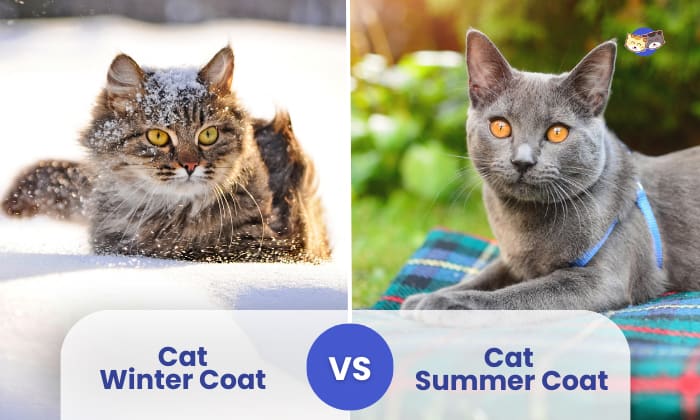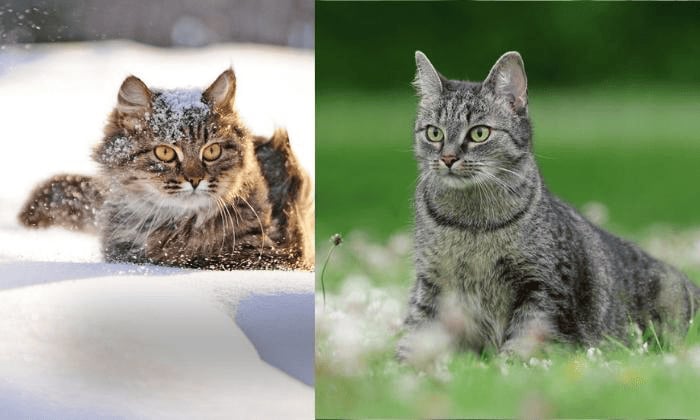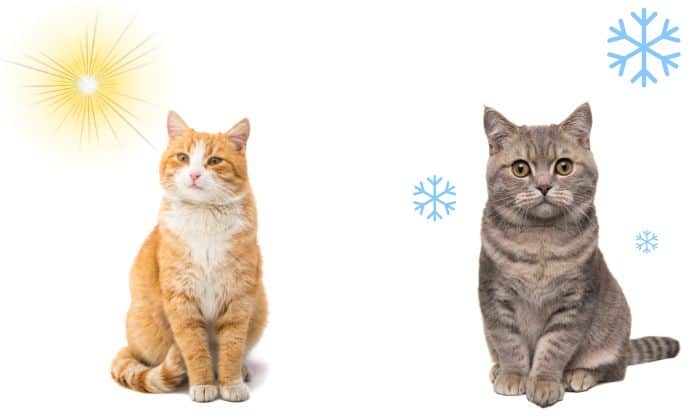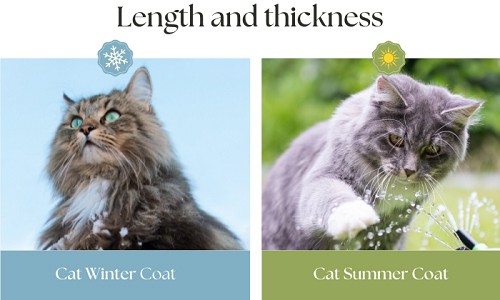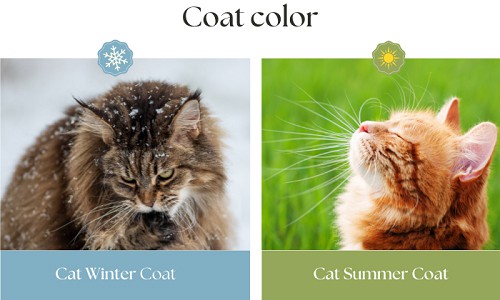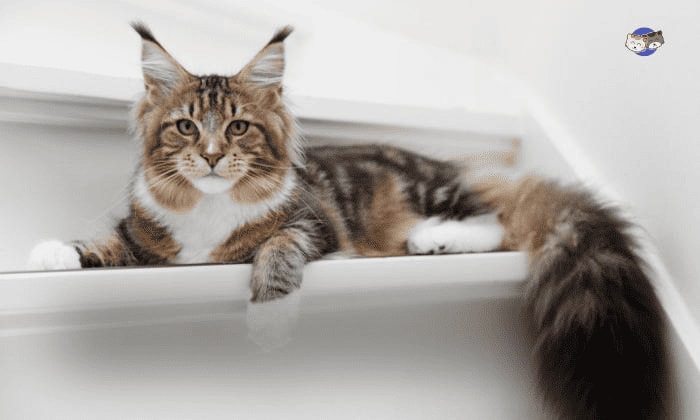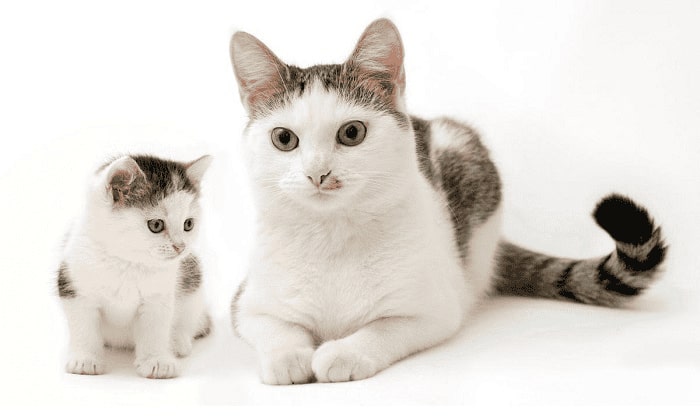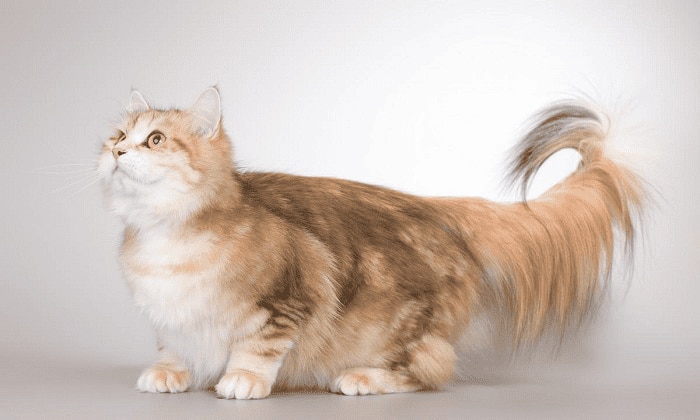Did you know that cat’s fur usually changes because of the season change? If you observe thoroughly, cat winter coat vs summer coat have some noticeable differences during these separate seasons.
In summer, a cat’s coat is usually sleek. But when winter comes, the coat grows more due to the cold temperature – making it fluffier and thicker.
In this article, we will discover the differences between season coats of cats and explore what we can do as they transition to this change.
Table of Contents
Comparison & Overview
Cats, like many other animals, possess the remarkable ability to adapt to seasonal changes by developing different coats for winter and summer.
Normally, cats have two layers of coats, mainly the top and bottom layers.
The top layer coat, usually long and sleek, is responsible for keeping cats warm by trapping air. While the bottom layer, which consists of shorter and thicker fur, is responsible for their insulation from a cold floor.
While the top layer shows the color patterns of your cat’s fur, the undercoat is the fluffier layer.
As the temperatures drop and colder weather approaches, cats undergo a natural process where cats grow winter coats to keep them warm and protected. And, the undercoat is the “winter coat” per se that will grow thicker.
Differences Between Cat Winter vs Summer Coat
1. Length and Thickness
Cat coats for winter become denser and thicker, often featuring an extra layer of insulating fur. This extra fur will help cats to keep them warm during the winter season. ‘The winter coat of cats is usually fluffier than the summer coat. This is because the coat is protective for your furry friend during the cold season.
Cat coats for summer change to be shorter and thinner. This change of coats prompts the cats to keep their temperature cool during the summer.
It is also the reason why cat shedding in summer is pretty prevalent. To keep their temperature cool, cats shed their summer coat within 2- 3 weeks when the summer is on the way.
2. Coat Color
For very few, the coat might also change color to become a bit brighter due to sunlight, so this change is more noticeable in the summer season.
On the other hands, in some cats, the thick winter coat, or the bottom layer, grows a bit greyer, making the fur color darker than usual.
These changes in a cat’s fur coat might not be obvious for some cat breeds, but if you have a long-haired cat such as maine coon and ragdoll, this might be more noticeable!
Factors Trigger a Cat to Develop Its Winter Coat
Due to the decrease in the temperature and the daylight hours as the season shifts to winter, this change in the environment triggers the cat’s body to produce the melatonin hormone.
This hormone is responsible for storing more fat which in turn causes longer and thicker fur coats in specific parts of a cat’s body, mainly in the back and flanks.
This winter coat helps the cat to feel warmth amidst the cold weather.
When Do Cats Get Their Winter Coat?
Generally, cats start to grow their winter coat in fall from September to November. The change in season and daylight serve as the trigger for this change in your fur baby’s coat.
However, if you and your cat live in a country that does not have much of a shift in season, this change in your cat’s fur might not be that noticeable.
Does a Siberian Cat Grow a Winter Coat?
Yes! Just like any other cats, Siberian cats also grow their longer winter coat and shed the same, usually around spring.
They generally shed twice a year – one during spring and another during summer. But during summer, they shed shorter fur hairs.
Do Indoor Cats Grow Winter Coats?
Absolutely! Most cats grow their winter coats as they near the winter season, except those cats that belong to hairless cats such as Sphynx, Devon Rex, and Lykoi.
Even though indoor cats don’t usually get soaked with sunlight, just like wild cats, they can still grow winter coats because of the trigger they get from environmental change.
Also, most indoor cats can still get ample sunlight by looking out the window. These factors contribute to them growing their winter coats.
Why is My Indoor Cat Shedding a Lot in Winter?
As the season nears the end of winter and comes near the start of spring, your cat’s fur will become less and less through shedding.
This is especially true for wild cats; they usually shed around spring to summer based on sunlight exposure.
For indoor cats, however, they usually shed their fur around late spring to summer. But this varies for each cat.
For rare occurrences, some indoor cats shed even during winter because their body loses track of the change in season and could shed all year round. One good example of cats that shed in winter is a tabby cat.
How to Care for a Cat’s Coat?
During the season shift, it’s important to know the care efforts we can do for our fur babies. Here are some of the things you can do in this transition:
- Brush your cat’s fur frequently: This is important to distribute natural oils in your cat’s fur and remove unnecessary fur hairs thus, preventing some hairballs.
- Maximize the use of supplements: It’s also a plus if you can provide your cat hair supplement to help take better care of their coat. One thing you should look for in buying a supplement is it should contain omega-3 fatty acids or any other ingredient that the vet advised.
- Bathing your cat: It’s also advisable to bathe your cat once or twice a month and use a cat-friendly shampoo.
Conclusion
Now you kwow that cat winter coat vs summer coat are different. For some breeds, the changes can be obvious, while others only show in their coat shedding in summer. Indeed, we can try to help our fur babies comfortably shift from season to season and give them the best care they need!

I am Amy Sawy, a Doctor of Veterinary Medicine (DVM) graduate from the University of Kansas. y husband, Dr. Plummer, and I own a veterinary clinic in Phillipsburg, Kansas. In addition to my professional background, I am a devoted pet owner myself, with a household that includes dogs, rodents, and most notably, cats – a total of five felines in my home.
In 2020, I joined an organization as a professional writer, leveraging my experience and collaborating with my team to deliver the most valuable information for your cat’s care.


